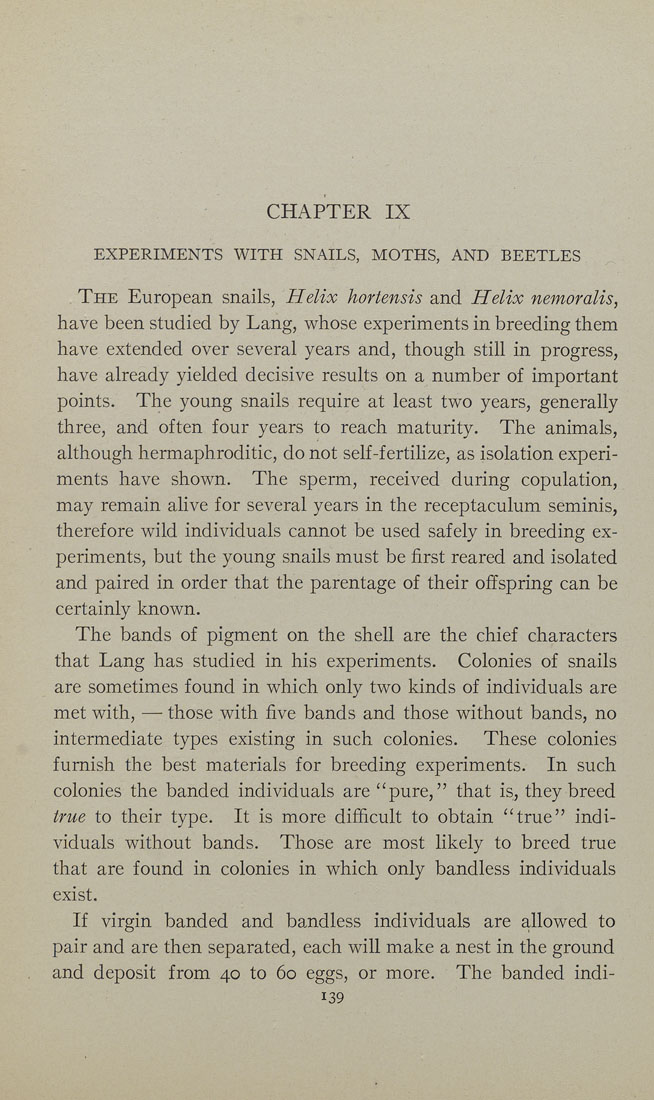CHAPTER IX
EXPERIMENTS WITH SNAILS, MOTHS, AND BEETLES
The European snails. Helix hortensis and Helix nemoralis,
have been studied by Lang, whose experiments in breeding them
have extended over several years and, though still in progress,
have already yielded decisive results on a number of important
points. The young snails require at least two years, generally
three, and often four years to reach maturity. The animals,
although hermaphroditic, do not self-fertilize, as isolation experi¬
ments have shown. The sperm, received during copulation,
may remain alive for several years in the receptaculum seminis,
therefore wild individuals cannot be used safely in breeding ex¬
periments, but the young snails must be first reared and isolated
and paired in order that the parentage of their offspring can be
certainly known.
The bands of pigment on the shell are the chief characters
that Lang has studied in his experiments. Colonies of snails
are sometimes found in which only two kinds of individuals are
met with, — those with five bands and those without bands, no
intermediate types existing in such colonies. These colonies
furnish the best materials for breeding experiments. In such
colonies the banded individuals are "pure," that is, they breed
true to their type. It is more difficult to obtain "true" indi¬
viduals without bands. Those are most likely to breed true
that are found in colonies in which only bandless individuals
exist.
If virgin banded and bandless individuals are allowed to
pair and are then separated, each will make a nest in the ground
and deposit from 40 to 60 eggs, or more. The banded indi-
139
|








